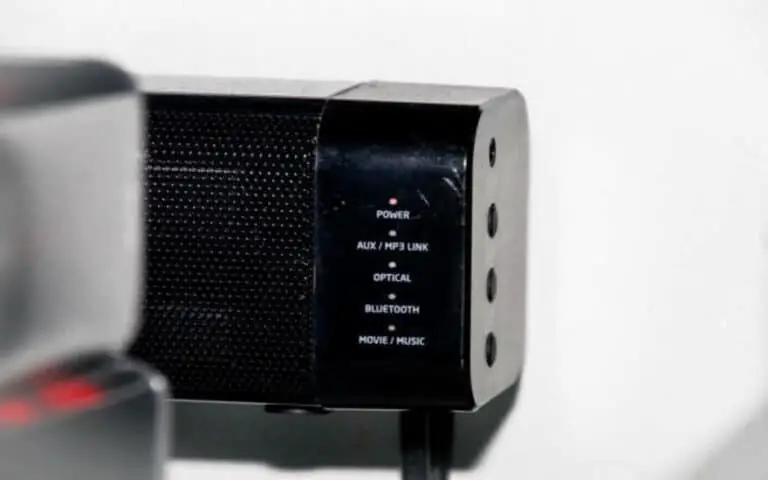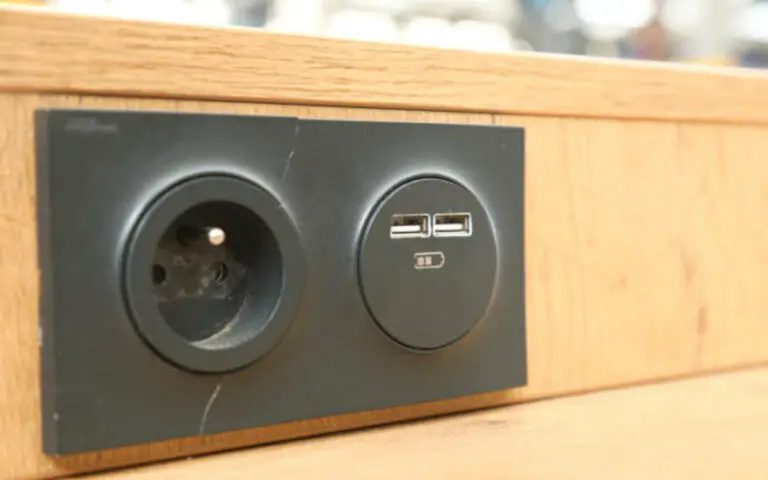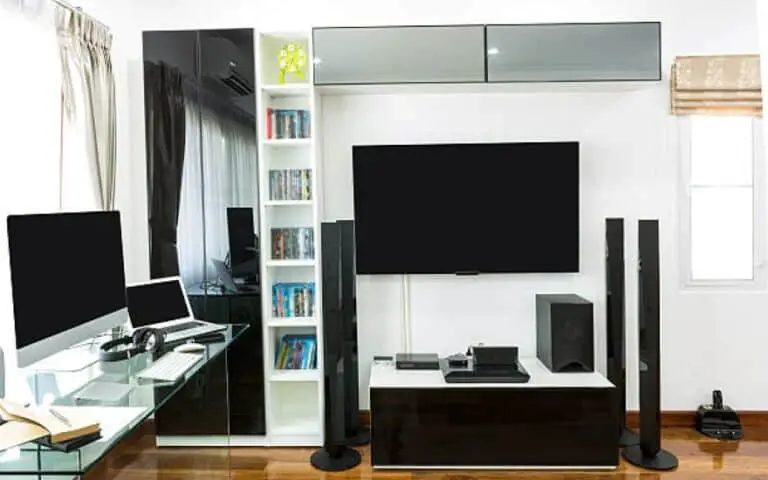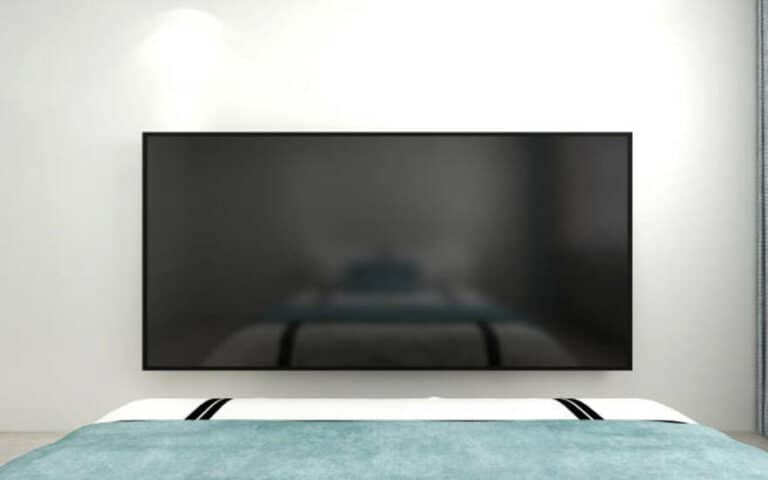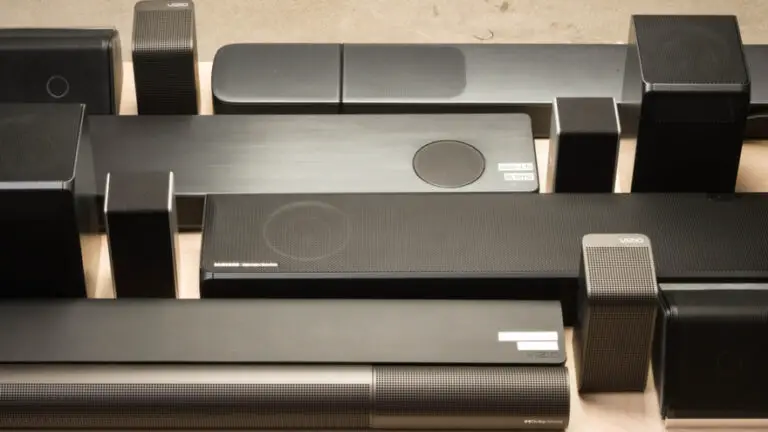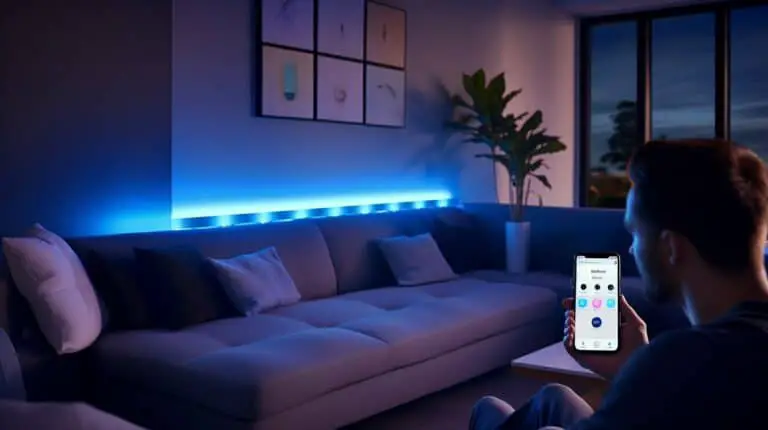In this blog post, I’ll show you how to get the most out of your subwoofer by using it without a soundbar. Stick around for some easy tips and tricks to enhance your listening experience.

How To Use Vizio Subwoofer Without Soundbar?
Hey there! If you’re looking to use your Vizio subwoofer without a soundbar, it’s possible. First, you must ensure your subwoofer is compatible with your TV. If it is, you can connect the subwoofer directly to the TV using an audio cable. Adjust the volume control using the designated HDMI cord and pair the subwoofer with the TV.
If your TV does not have a subwoofer output, you must connect the subwoofer to an amplifier. Optimizing the subwoofer for the best audio experience is also essential by adjusting internal TV speaker settings. Troubleshooting connection issues may be necessary, but ultimately, you can enjoy high-quality audio without a soundbar with these steps.
Remember, it’s possible to improve the sound quality of your TV with a subwoofer, so don’t hesitate to try it!
1. Determine the Compatibility between the Subwoofer and TV
Before trying to use a Vizio subwoofer without a soundbar, it’s essential to determine if they are compatible with your TV. Check the back of your TV to see if it has an audio output, as this is necessary to connect the subwoofer directly to the TV.
Additionally, check if your subwoofer requires a compatible soundbar for pairing or if it can be used independently. It’s always best to refer to the manufacturer’s compatibility and setup instructions.
Once you have confirmed the compatibility, you can connect the subwoofer to your TV or amplifier for optimal audio quality. Good compatibility and setup are crucial for a successful and enjoyable audio experience.
2. Connect the Subwoofer to the TV with Audio Cable
After determining the compatibility of my Vizio subwoofer with my TV, I realized I could connect it directly to the TV using an audio cable. This option is perfect for those who want to use their subwoofer without a soundbar. I joined the subwoofer using an analog audio cable, but you can also use an HDMI cable or an optical cable, depending on what your TV supports.
Once connected, I adjusted the volume using the designated HDMI cord to ensure high-quality sound output. If you have trouble pairing your subwoofer with the TV, you can always check for firmware updates using the Vizio SmartCast app.
Adding a subwoofer can significantly enhance the TV’s sound quality, so optimizing the subwoofer for the best audio experience is essential. I adjusted the internal TV speaker settings and used an amplifier if necessary.
In conclusion, using a Vizio subwoofer without a soundbar is easy, as long as you have a compatible TV and the right cables. By following these simple steps, you’ll be able to enjoy the high-quality sound output and enhance your overall viewing experience.
3. Adjust Volume Control Using the Designated HDMI Cord
Now that we’ve connected our subwoofer to the TV let’s talk about adjusting the volume control. Using a designated HDMI cord for volume control is essential to ensure the best audio experience. First, ensure the HDMI/ARC is enabled on the TV and soundbar settings.
Then, connect the designated HDMI cord between the TV and the soundbar. When adjusting the volume, you’ll notice a difference in the subwoofer’s levels, creating a more immersive sound experience. This is just one step towards optimizing your subwoofer for the best audio quality without a soundbar.
4. Pair Subwoofer with Soundbar using
Once you have determined compatibility and connected your Vizio subwoofer to your TV, it’s time to pair it with a soundbar. If you have a Vizio soundbar, the process is relatively simple – press down and hold the pairing button on the back of the subwoofer until the LED blinks.
Then, use the ‘Pair’ command on the remote or follow the instructions in the manual to complete the pairing process. If you have a non-Vizio soundbar, you may need to connect the two devices with an audio cable or consult the manual for specific instructions.
Once paired, you can adjust the volume control and optimize the subwoofer for the best audio experience. Remember also to change the internal TV speaker settings as needed. Enjoy your high-quality audio with your Vizio subwoofer and soundbar!
5. Connect Subwoofer to Amplifier to Use Without Soundbar
After researching, I discovered that it is possible to use a Vizio subwoofer without a soundbar by connecting it to an amplifier. You need to use an audio cable to click the subwoofer to the amplifier. Once it is connected, adjust the volume control using the designated HDMI cord to optimize the audio experience.
Adding a standalone subwoofer to a TV may not provide the best audio experience. If you have a budget over $500, investing in an AV receiver and decent stereo speakers may be a better option. However, if the amplifier route is what you choose, research and purchase a high-quality amplifier that can handle the subwoofer’s power.
A soundbar is still the most accessible and affordable way to get excellent audio quality from your TV. But if you are set on using just a subwoofer for whatever reason, connecting it to an amplifier is an option. As always, make sure to optimize the settings on your TV and troubleshoot any connection issues that may arise.
6. Adding a Subwoofer to Vizio Soundbar
If you already have a Vizio soundbar and want to add a subwoofer for better bass, it’s a relatively straightforward process. Before getting started, ensure the subwoofer is compatible with your Vizio soundbar. Once you have confirmed compatibility, connect the subwoofer to the soundbar using the instructions provided by Vizio.
This usually involves a wireless pairing process with the soundbar. Once connected, adjust the settings on both the subwoofer and soundbar to optimize the audio experience. You can enjoy high-quality audio from your Vizio soundbar and subwoofer combo with a little adjustment.
7. Optimizing the Subwoofer for the Best Audio Experience
Now that we have connected our Vizio subwoofer to our TV without a soundbar optimizing it for the best audio experience is time. Firstly, adjust the crossover on your subwoofer to determine at what frequency it will start to play.
The ideal range is usually between 60-100 Hz. Then set the volume to a desired level, but be cautious not to overpower the other components in your system. If your subwoofer has an equalizer, adjust it to balance the sound output.
Check the phase controls, which help balance the subwoofer’s work with the rest of the excellent system. It may take some fine-tuning, but once the settings are optimized, you can enjoy your music and movies to their fullest potential without bloated or undernourished bass.
8. Adjusting Internal TV Speaker Settings
When adding a subwoofer to your TV setup, adjusting the internal speaker settings for optimal sound quality is essential. To do this, go into your TV’s audio settings and select “speaker output.” You can adjust the volume balance between the TV’s speakers and the subwoofer.
It’s important to note that some TVs may be unable to adapt subwoofer settings. In this case, you may need an external amplifier or a soundbar. Don’t be afraid to play around with the settings until you find the perfect balance for your setup. It can make all the difference in your audio experience.
9. Troubleshooting Subwoofer Connection Issues
So, you’re all set to enjoy that rich, bass-heavy audio experience with your Vizio subwoofer without a soundbar. But what if you’re facing some connection issues? Don’t worry – I’ve got you covered with some troubleshooting tips.
First, ensure that all cables are securely connected and that the audio settings on your TV are configured correctly. You’ll also want to check if your subwoofer is compatible with your TV and if it requires any firmware updates.
If you’re still facing issues, trying a different audio cable or even an additional audio source may be worth identifying if the problem is with the subwoofer or the TV. Additionally, turning off any EQ settings on your TV or audio may help improve the connection.
If you’re experiencing sound distortion, it could be due to interference with other electronic devices. Try relocating your subwoofer or power source to a different location.
Don’t forget to refer back to the previous sections on connecting your subwoofer to your TV or amplifier, as improper connections can also cause issues.
By following these troubleshooting tips, you’ll be well on your way to enjoying crystal clear, powerful audio with your Vizio subwoofer. Happy listening!
10. Enjoying High-Quality Audio with Vizio Subwoofer without Soundbar
After going through the steps on using a Vizio subwoofer without a soundbar, I can confidently say that enjoying high-quality audio without a soundbar is possible with a Vizio subwoofer. Connecting the subwoofer directly to the TV via an audio cable or HDMI cord can provide good audio quality. Still, it may not be as immersive as using the subwoofer with a soundbar.
However, connecting it to an amplifier can do the trick if you do not have a compatible Vizio soundbar or prefer to use the subwoofer alone. It’s important to note that optimizing the subwoofer’s position and settings can significantly enhance the audio experience. Troubleshooting connection issues may be necessary, but with patience and diligence, you can enjoy a rich audio experience from your Vizio subwoofer without a soundbar.
Summary
Overall, using a Vizio subwoofer without a soundbar is possible, ensuring compatibility between the subwoofer and TVessentialtant. The most common method is to connect the subwoofer to the TV via an audio cable, using the designated HDMI cord to adjust the volume control.
Alternatively, the subwoofer can be paired with an amplifier without a soundbar or added to a Vizio soundbar for an improved audio experience. Optimizing the subwoofer and adjusting internal TV speaker settings are essential for the best results.
If connection issues arise, troubleshooting steps can be taken. Ultimately, high-quality audio with a Vizio subwoofer without a soundbar is possible with the proper setup and adjustments.
Can a subwoofer work without a soundbar?
Yes, a subwoofer can work without a soundbar, and there are a few ways to achieve this. As mentioned, you can connect your subwoofer directly to your TV using an audio cable. You can connect your subwoofer to an amplifier or receiver to enhance your audio experience.
However, remember that without the speakers in a soundbar, you may not get the full range of sound with a complete home theater system. But if you’re looking for extra bass for your TV’s audio, using a subwoofer without a soundbar can improve your viewing experience.
How do I connect a subwoofer to my TV without a soundbar?
If you want to upgrade the audio quality of your TV but don’t want to invest in a soundbar, connecting a subwoofer directly to your TV is a great option. The easiest way to connect a subwoofer to your TV is by using an audio cable.
Plug one endline into the subwoofer and the other into your TV’s audio output. You can use your TV’s audio output if your TV doesn’t have an audio output. Once connected, adjust the volume control using the designated HDMI cord for the best audio experience.
Additionally, you can optimize the subwoofer by changing the internal TV speaker settings. With these simple steps, you can enjoy high-quality audio without needing a soundbar.
How can I improve the sound quality of my TV with a subwoofer?
Adding a subwoofer to your TV is a great way to enhance the overall audio experience. First, ensure that your subwoofer and TV are compatible with improving sound quality. You can connect the subwoofer to your TV using an audio cable if they are.
Next, adjust the volume control on your designated HDMI cord or pair your subwoofer with a soundbar to optimize the audio levels. If you don’t have a soundbar, you can connect the subwoofer to an amplifier to use it. Finally, adjust your TV’s internal speaker settings to balance everything. Following these steps, you can enjoy high-quality audio that immerses you in your favorite movies or TV shows.

